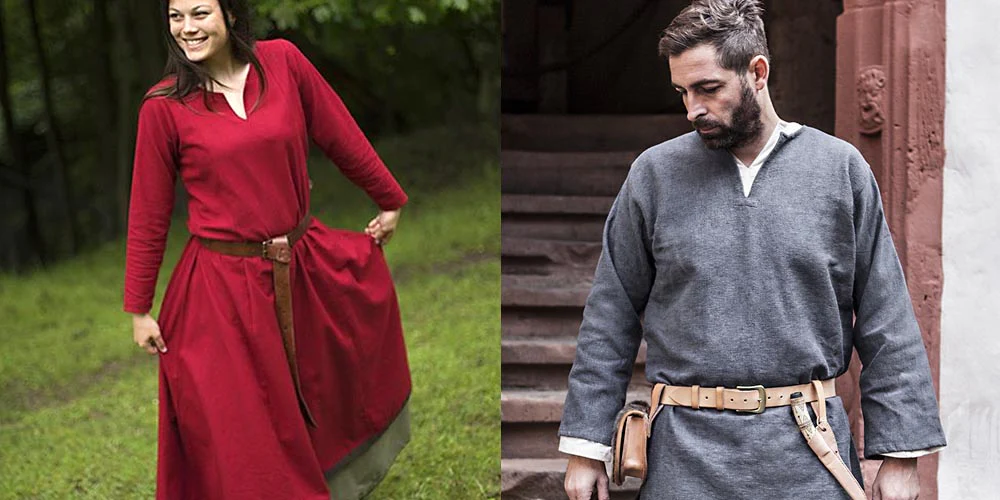Although today we think of Vikings as wearing horned helmets and animal skins, this is a Hollywood invention. The truth is that we don’t know much about Viking clothing because very few clothes have survived from that time period. We do know that they were well-dressed people who liked bright colors and elaborate designs.
The main piece of clothing for both men and women was a tunic. This was a simple shirt that reached down to the knees or lower. Women also wore skirts and dresses. Both men and women wore cloaks, which were pieces of clothing that could be wrapped around the body for warmth.
Viking footwear was usually made from leather and fur. They didn’t wear shoes with horns on them, despite what you may have seen in movies!
Viking clothes were often decorated with embroidery, beads, and other decorations. Vikings liked bright colors, so their clothes were often dyed in shades of red, blue, and green.

The way a Viking dressed depended on their social status, occupation, and gender. Wealthy Vikings could afford more elaborate and expensive clothing than poorer Vikings. For example, a rich Viking might have a tunic made of silk while a poor Viking would have a tunic made of wool.
Viking men typically wore trousers and tunics. The trousers were usually made of wool and the tunics were usually made of linen. Both the trousers and tunics would be belted at the waist. Men also sometimes wore cloaks, which were made of wool or fur. In cold weather, they would wear boots and gloves.
Viking women typically wore long dresses with sleeves. The dresses were usually made of wool or linen. In cold weather, they would also wear cloaks, boots, and gloves. Women often wore their hair in braids or up in a bun. They also sometimes wore jewelry such as brooches or necklaces.
